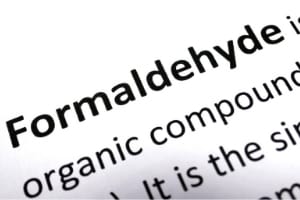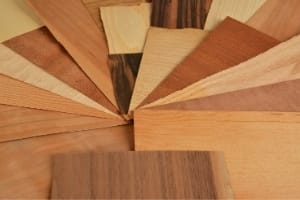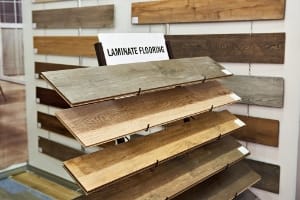Non-toxic flooring options for your home
By Dana Krizmanic,
If you are looking for a non-toxic flooring option, this will help you be familiar with how each flooring type could impact the indoor air quality of your home. But, before getting into the flooring types, let’s talk about formaldehyde.
Composite wood flooring products like engineered hardwood and laminate are made by fusing wood layers together. These glues and resins used are often made with formaldehyde. To minimize exposure, look for:
- No Added Formaldehyde (NAF) – This is the highest standard and is best for your indoor air.
- Ultra-Low Emitting Formaldehyde (ULEF) – The product’s glues and resins contain formaldehyde, but the product emits formaldehyde fumes at ultra-low levels.
- No Added Urea Formaldehyde (NAUF) – The product does not use urea-formaldehyde. NAUF products use phenol-based glues, which emit 90 percent less formaldehyde.
You can also look for products labeled as California Phase 2 Compliant. This is a national standard for low formaldehyde emissions in pressed wood products. These products are marked as TSCA Title VI Compliant.
NOW, let’s talk about flooring types…
Carpeting
Carpeting is a popular flooring choice. The most environmentally friendly carpets are made using natural fibers, like organic cotton, wool, sisal, seagrass, jute and bamboo. These materials require few, if any, pesticides or fertilizer to grow. The Carpet and Rug Institute‘s (CRI) Green Label Plus is an excellent certification to look for. The accreditation ensures carpets and adhesives meet high standards of indoor air quality.
Solid Wood
Hardwood flooring is typically a good option for anyone with allergies. You can easily remove dust and allergens. They fabricate genuine hardwood flooring from solid wood that they harvest from trees. It is essential to choose a non-toxic finish when installing new flooring. When using solid wood flooring, note the following:
- Do not use recycled or salvaged wood that has been previously painted, glued or coated
- Avoid wood treated with biocides or fungicides
- When installing, use nail-down or click/interlocking installation instead of glue
- If you do use glue when installing, choose low-VOC glue
- Purchase it pre-finished instead of finishing on-site to avoid exposure to fumes from stains and finishes
- If not prefinished, choose low-VOC wood stains and sealants to reduce off-gassing
Engineered Hardwood
Engineered hardwood flooring is constructed with a top layer of real hardwood veneer that is bonded to a core of wood materials. An advantage with engineered hardwood is that it comes prefinished. That means less exposure to fumes from stains and finishes. The drawback is the wood composite materials, and glues may possibly contain formaldehyde. So, when choosing engineered hardwood flooring, make sure to select a product that uses formaldehyde-free glues and a low VOC finish.
Ceramic, Porcelain & Glass Tile
Tile is a safe, non-toxic flooring option that is easy to maintain. Ceramic, porcelain and glass tiles are all durable options for solid-surface flooring and are a great option for rooms with moisture, like bathrooms and kitchens. For a sustainable option, look for glass tiles made from recycled materials. When using tile flooring, make sure to:
- Avoid lead glaze by purchasing tiles made in the United States.
- Use a low VOC cement backer board.
- Utilize water-based adhesives, cement thin-set (also known as mortar) to set tiles.
- Work with a cement-based grout.
- Use a low-VOC sealant to protect the grout and tile.
- Cut or grind tiles outside to reduce the inhalation of dust.
Vinyl Flooring
One of the best types of vinyl flooring on the market is luxury vinyl tile and plank. It is affordable, durable and beautiful. Luxury vinyl flooring can last anywhere from 10 to 20 years. The downside to vinyl plank is that it can contain toxic chemicals because of its construction of reprocessed plastic. However, many manufacturers are all taking steps to remove toxic phthalates from their vinyl flooring. Just do your research before you purchase it. A low-quality vinyl flooring can be a big VOC off-gasser.
Laminate Flooring
It isn’t easy to find completely non-toxic laminate flooring. Non-toxic laminate flooring is difficult to find because it comprises multiple layers containing a good amount of industrial-strength adhesive that emit VOCs. However, some options are much safer for your home than others. The flooring industry today has put more focus on consumer protection. Manufacturers are now making more and more laminate surfaces that are now low-VOC and non-toxic.
- Look for laminate with a low formaldehyde content
- Pick a click-together floating floor rather than glue-down
- Steer clear of cheaply made products from overseas
